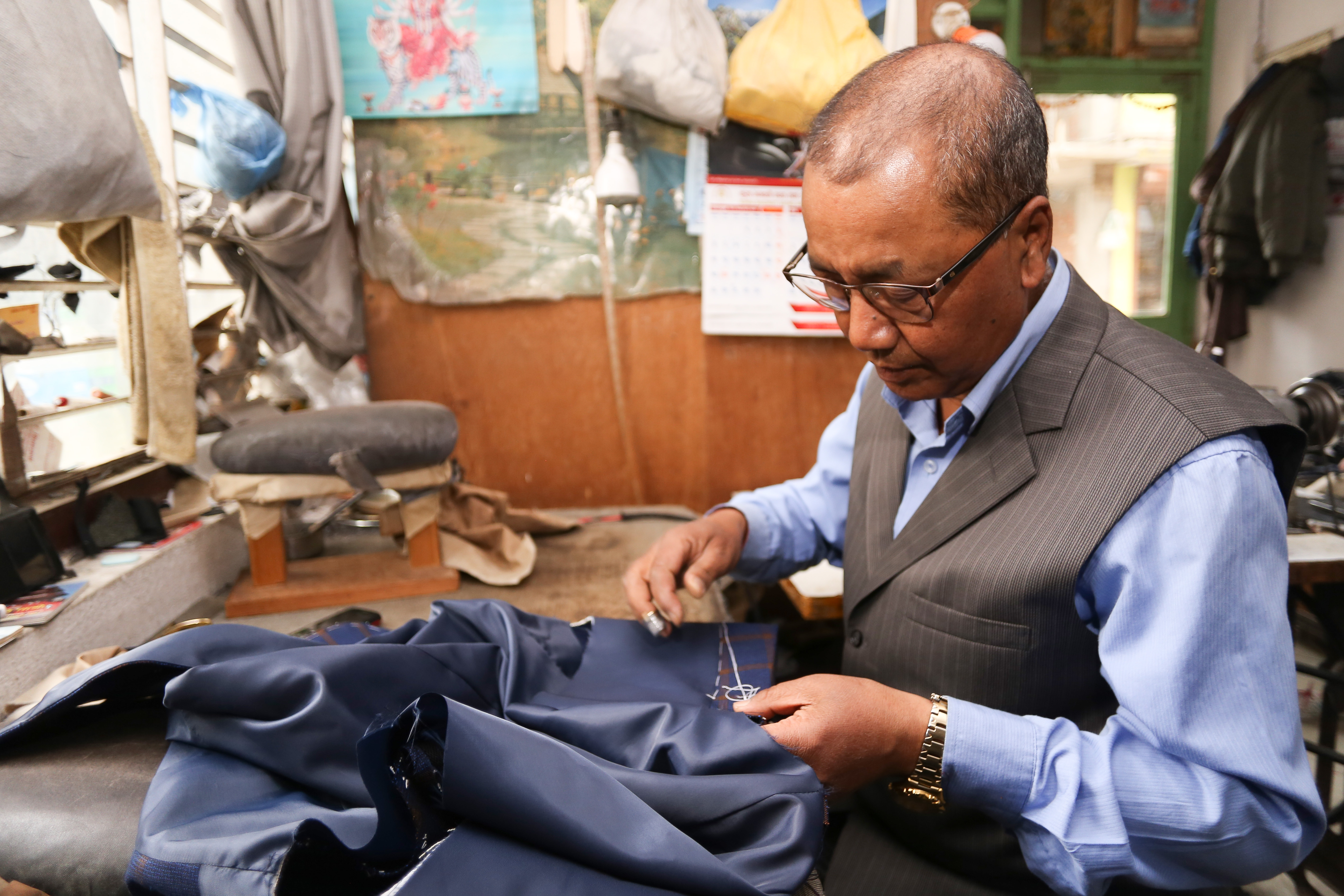Expert Tailor Perth: Crafting Custom Suits for every single Event
Wiki Article
Recognizing the Tailoring Refine: From Textile Option to Final Suitable for the Suitable Wardrobe
The tailoring process is a complex interaction of art and scientific research, starting with the crucial decision of material selection and finishing in the precise modifications of final installations. Each material type brings distinct qualities that influence not only the visual allure yet also the garment's durability and suitability for numerous celebrations. Comprehending the nuances of customizing techniques can boost one's closet to extraordinary degrees of sophistication. As we discover these elements further, one have to take into consideration just how also the smallest information can dramatically affect the general outcome of one's individual style.Relevance of Fabric Selection
Picking the best material is essential in the customizing procedure, as it straight affects the comfort, longevity, and overall aesthetic of the last garment (tailor perth). The choice of textile sets the foundation for the garment's functionality, performance, and design. Different fabrics possess distinct homes, such as weight, stretch, and breathability, which can significantly impact how the garment drapes and fits the bodyMoreover, material option impacts the garment's longevity and ease of treatment. Premium fabrics can withstand wear and tear, keeping their look and framework gradually, while lower-quality materials may lead to pilling or fading. In addition, the appropriate textile adds to the garment's capability to shift across seasons and occasions, therefore enhancing flexibility.
A tailored item made from an appropriate fabric not just showcases workmanship however also elevates the wearer's self-confidence. As a result, comprehending the subtleties of material choice is vital for any type of tailoring undertaking. It makes certain that the last product not just satisfies the aesthetic desires of the client however also lines up with useful needs, thereby attaining an unified equilibrium in between type and feature in the tailored closet.
Kinds of Fabrics and Their Uses
Understanding the numerous types of textiles available is essential for making informed choices during the customizing process. Each material possesses distinct attributes that determine its suitability for particular garments and events.Cotton, known for its breathability and gentleness, is perfect for informal wear and summer clothes. Its flexibility permits it to be tailored into every little thing from shirts to dresses. Wool, on the other hand, is preferred for its heat and structure, making it an exceptional choice for official matches and outerwear - tailor perth. Its natural flexibility helps garments maintain form over time.
Silk exudes high-end and is lightweight, making it best for eveningwear and fragile shirts; nonetheless, it requires careful handling due to its frailty. Linen, with its textured finish, is a prominent option for cozy environments, supplying a crisp and ventilated feeling, but it wrinkles conveniently, which may impact the garment's look.
Artificial textiles, such as polyester and nylon, deal longevity and resistance to wrinkles, making them suitable for everyday wear and energetic apparel. Comprehending these textile kinds and their residential properties enables far better decision-making, making certain that each tailored piece not only fits well yet additionally straightens with the desired purpose and occasion.
The Tailoring Techniques Discussed
The art of tailoring relies upon a range of techniques that change material right into well-fitted garments. Central to this process is pattern composing, where a dressmaker produces design templates based on the customer's measurements and desired style. This initial action ensures that the garment will certainly fit the wearer correctly before any kind of reducing occurs.As soon as patterns are developed, cutting strategies enter play. Precision is extremely important as inaccuracies can lead to misfitting garments. Tailors frequently make use of useful content different cutting approaches, such as single-layer reducing for elaborate designs and multiple-layer reducing for efficiency on standard patterns.
Basting is another essential technique, permitting tailors visit the site to temporarily stitch material assemble for a preliminary installation. This technique uses the possibility to evaluate the drape and total shape prior to last sewing.
Seaming strategies, including flat-felled seams and French joints, enhance the garment's resilience and visual appeal. Tailors likewise employ methods such as interfacing and padding to supply structure and shape to certain areas, like shoulders and collars.
Lastly, completing strategies, including hemming and edge ending up, ensure the garment's long life while providing a refined appearance. Together, these strategies form the backbone of efficient customizing, resulting in beautiful, tailor-made clothing.
Suitable Adjustments and Factors To Consider

Secret factors to consider include the shoulder fit, which needs to neither droop nor restrict activity, and the sleeve size, which should enable comfy arm activity while preserving a polished appearance. Additionally, modifications at the waistline can improve the shape, with options to allow out or absorb material as required.
The surge of trousers is another crucial factor; it must sit pleasantly above the hips without triggering pain, permitting convenience of activity. Hemming sizes for both pants and skirts ought to mirror the wearer's favored style while appreciating percentages.
reference

Maintaining Your Tailored Wardrobe
Correct upkeep of tailored garments is essential to preserving their fit and appearance in time. To guarantee longevity, regular cleansing is extremely important. Always adhere to the treatment tag directions, which may advise completely dry cleansing for fragile textiles or maker cleaning for even more durable materials. Prevent constant laundering, as this can wear down the material and change the garment's shape.Storage is just as essential; usage cushioned wall mounts for coats and coats to maintain shoulder framework, and shop pants folded nicely or hung to stop creasing. Secure garments from direct sunlight, which can discolor shades and damage fibers.
Additionally, periodic inspections for small fixings can avoid bigger problems. Look for loose switches, fraying seams, or indicators of moth damages, dealing with these problems promptly to keep the garment's stability.
Finally, take into consideration seasonal rotation. Putting on customized pieces in moderation allows materials to recuperate, extending their life expectancy. By implementing these maintenance techniques, you can guarantee that your tailored garments remain as excellent as the day you initially used them, improving your suitable closet for many years to come.
Conclusion
The tailoring process, encompassing fabric option, knowledgeable strategies, and exact suitable modifications, plays a crucial duty in developing garments that enhance both comfort and style. Understanding the importance of upkeep expands the life of tailored garments, solidifying their value in a well-curated closet.Picking the best material is vital in the tailoring process, as it straight affects the convenience, durability, and total visual of the last garment. The selection of textile establishes the foundation for the garment's style, performance, and capability. Different materials have unique buildings, such as stretch, breathability, and weight, which can considerably impact how the garment drapes and fits the body.
The art of tailoring counts on a selection of strategies that change fabric right into well-fitted garments.The customizing procedure, including fabric option, skilled methods, and exact suitable changes, plays an essential role in producing garments that boost both comfort and style.
Report this wiki page